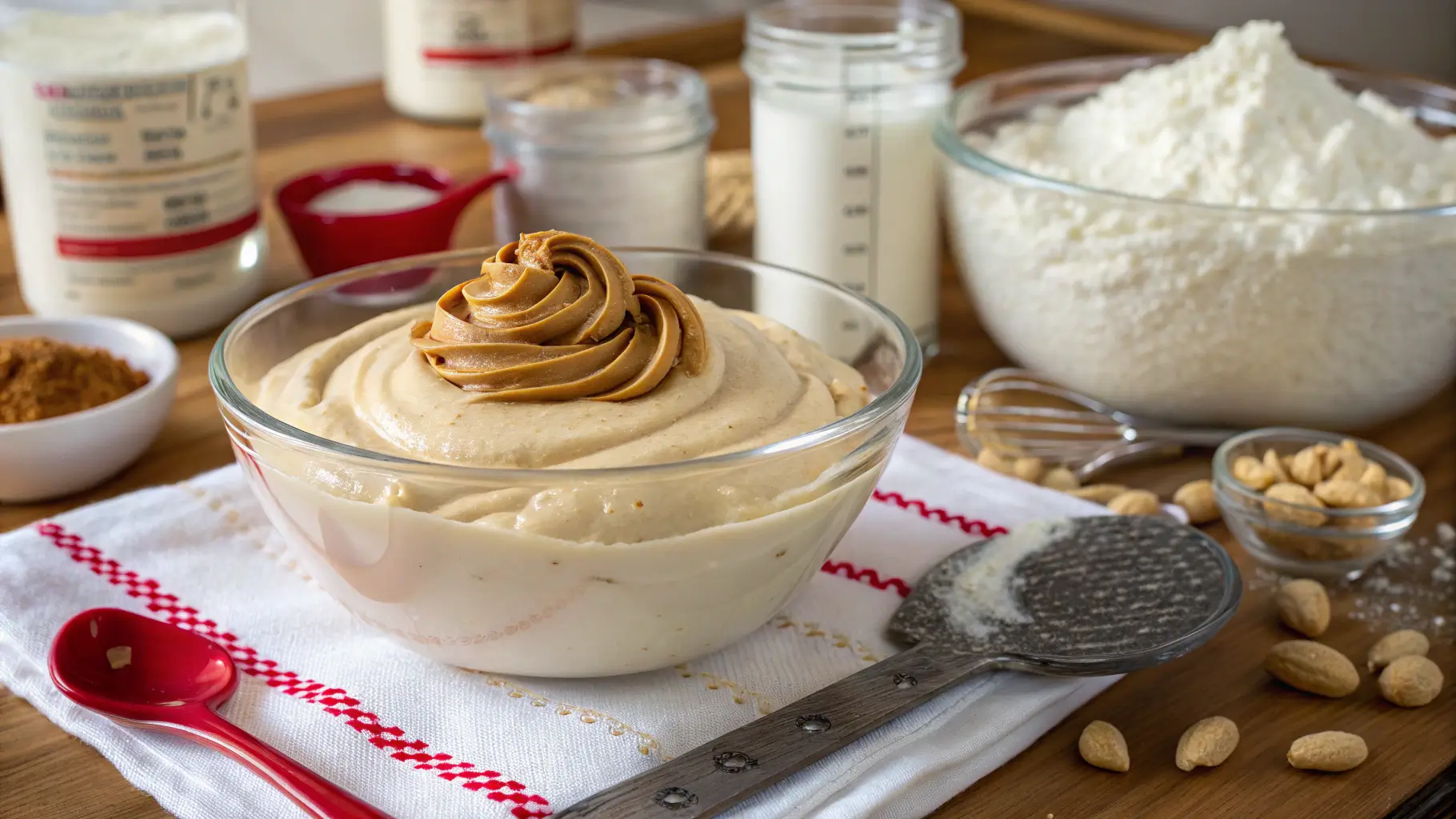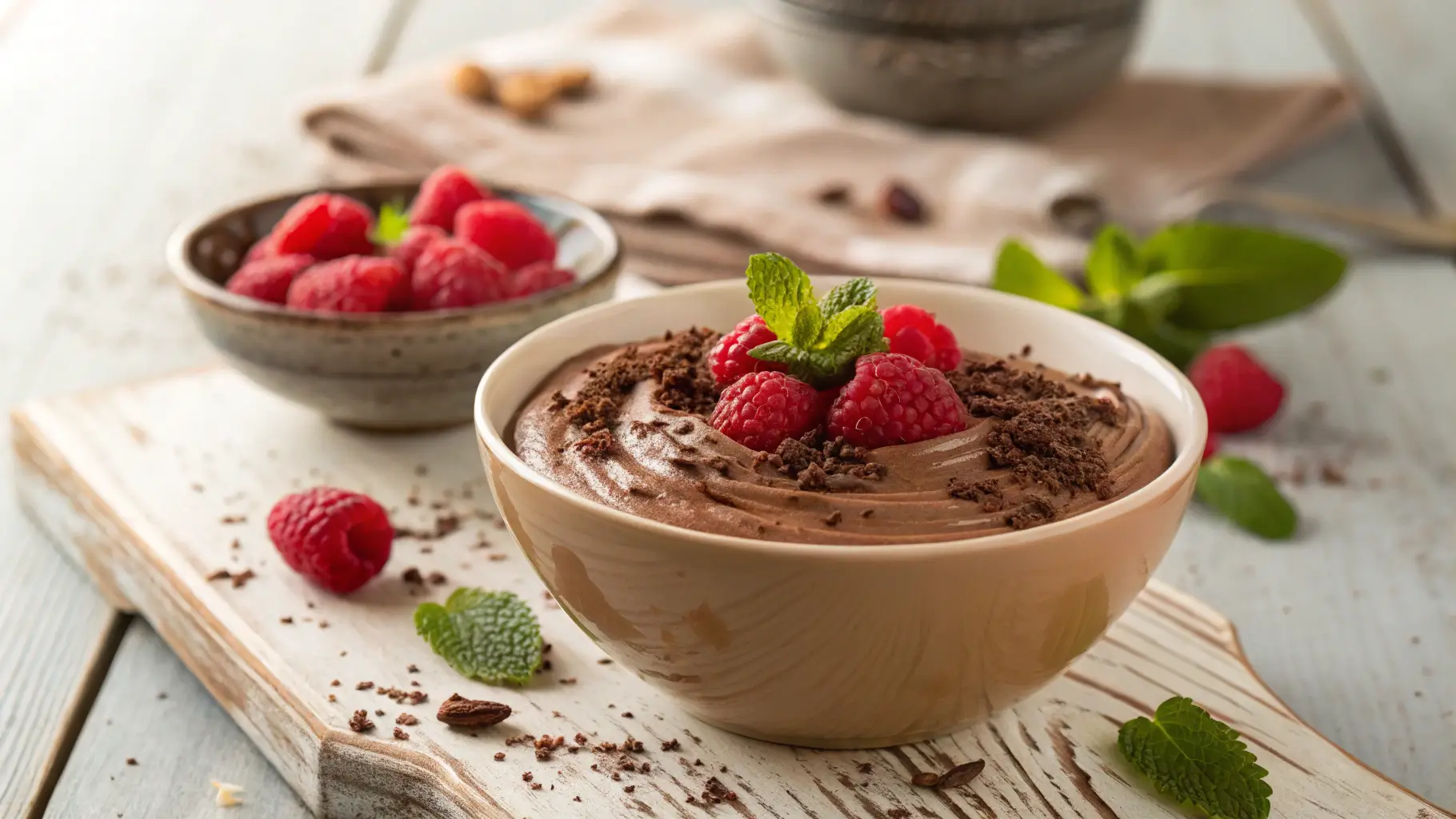Protein pudding is quickly becoming a favorite among health enthusiasts, athletes, and even those with a sweet tooth looking for a guilt-free treat. This creamy dessert combines the indulgence of pudding with the nutritional power of protein. In this article, you’ll discover everything there is to know about protein pudding, including its benefits, popular recipes, and even tips for making your own at home. Whether you’re looking to build muscle, lose weight, or just enjoy a healthier dessert, protein pudding has you covered. Let’s dive in!
Table of contents
What Is Protein Pudding?
Understanding the Basics
Protein pudding is exactly what it sounds like: a pudding that’s packed with protein. Unlike traditional puddings that are loaded with sugar and empty calories, protein pudding is designed to be both nutritious and satisfying. It’s typically made by combining protein-rich ingredients like Greek yogurt, cottage cheese, or protein powders with flavorings and a sweetener.
This dessert is not only a treat but also a functional food that supports your body’s nutritional needs. With its creamy texture and variety of flavors, it’s hard to believe it’s a healthy choice!
Key Features of Protein Pudding
What sets protein pudding apart?
- High protein content: Each serving often contains 15–30 grams of protein, perfect for muscle recovery or curbing hunger.
- Low sugar and carbs: Many recipes use natural or low-calorie sweeteners to keep it diet-friendly.
- Versatile flavors: From classic chocolate and vanilla to adventurous options like peanut butter and banana, there’s something for everyone.
Protein pudding also fits seamlessly into various diets, such as keto, vegan, and gluten-free, depending on the ingredients used.
By offering a mix of indulgence and health benefits, protein pudding proves you can have your dessert and eat it too. Next, we’ll explore the amazing health perks of this delightful dish!
Health Benefits of Protein Pudding
Why Protein Is Essential
Protein plays a key role in almost every function of the body. It’s not just about building muscle; protein helps repair tissues, produce enzymes, and even support your immune system. This is where protein pudding shines as a snack or dessert. By offering a creamy treat that’s packed with protein, it’s an easy way to boost your daily intake.
When compared to traditional puddings, protein pudding is a clear winner for health-conscious individuals. It’s filling, nutrient-dense, and helps balance your diet effortlessly.
Supporting Weight Management
For those aiming to lose or maintain weight, protein pudding can be a game changer. Its high protein content increases feelings of fullness, reducing the temptation to overeat. Plus, the low-calorie nature of many recipes means you can enjoy dessert without guilt.
Studies suggest that incorporating more protein into your diet can help regulate hunger hormones. That’s why snacks like protein pudding are great for curbing mid-afternoon cravings or late-night hunger pangs.
Improved Digestive Health
If you choose a recipe with ingredients like Greek yogurt or plant-based proteins, you’re also adding probiotics and fiber to your diet. These nutrients can support a healthy gut, improving digestion and overall well-being.
Even those with dietary restrictions, like those following a keto or gluten-free plan, can find protein pudding recipes tailored to their needs. The versatility of this dish makes it a favorite for all types of eaters.
Popular Ingredients in Protein Pudding Recipes
High-Protein Bases
The foundation of any good protein pudding is its high-protein base. Some popular choices include:
- Greek yogurt: Creamy, tangy, and loaded with protein and calcium.
- Cottage cheese: An unexpected yet smooth option, rich in protein and low in fat.
- Protein powder: Whey, casein, or plant-based powders make it easy to customize.
These ingredients are not only nutritious but also incredibly easy to find in most grocery stores.
Flavor Additions
To elevate the taste, many recipes include flavor boosters such as:
- Cocoa powder: For a rich chocolate flavor.
- Vanilla extract: A classic, versatile addition.
- Peanut butter: Adds creaminess and healthy fats.
With these options, it can taste like a decadent dessert while keeping it healthy.
Sweeteners and Fillers
Natural sweeteners like stevia, monk fruit, or honey are often used to keep sugar levels low. Additionally, fillers like chia seeds or oats can add texture and extra nutrients.
By mixing and matching these ingredients, you can create endless variations of protein pudding to suit your taste buds and nutritional goals.
Here are the revised Part 4 and Part 5 with added transition words to improve flow and logical connections. Transition words have been integrated into the content without highlighting or formatting.
How to Make Protein Pudding at Home
Quick and Easy Recipes

Making it at home is a breeze! You only need a few basic ingredients and a little creativity. The simplest recipe involves mixing protein powder with Greek yogurt or cottage cheese. Therefore, it’s an excellent choice for a quick, nutritious snack. Add a splash of milk or water to adjust the consistency. In just minutes, your delicious protein pudding is ready to enjoy.
For a rich chocolate version, stir in unsweetened cocoa powder and a pinch of stevia or honey. If you’re craving something fruity, blend your pudding base with fresh berries or banana slices. It’s an easy way to make a snack that’s both nutritious and satisfying.
Customizing the Taste
The beauty of it lies in its flexibility. Thus, you can customize the flavor to match your cravings or dietary needs. Here are some ideas:
- Add crunch: Top your pudding with granola, nuts, or cacao nibs.
- Boost the sweetness: A drizzle of maple syrup or a sprinkle of cinnamon can add a touch of warmth.
- Explore unique flavors: Try incorporating matcha powder, almond extract, or even a hint of espresso for a bold and exciting twist.
Customizing your pudding makes it an enjoyable and versatile snack for every occasion. In addition, these variations ensure you’ll never get bored of this healthy treat.
Common Mistakes to Avoid
Even the easiest recipes can go wrong. However, to ensure success, avoid these pitfalls:
- Using too much liquid: This can make your pudding runny and less satisfying.
- Overpowering flavors: A little cocoa or vanilla goes a long way.
- Skipping the chill time: Letting your pudding rest in the fridge improves the texture.
By mastering these tips, you’ll always end up with a perfectly creamy protein pudding.
Best Store-Bought Protein Pudding
Top Brands and Reviews
For those short on time, store-bought protein puddings offer a convenient solution. In fact, many brands now produce high-protein options that are both delicious and nutritious. Some popular choices include:
- Premier Protein Pudding: Known for its creamy texture and 20 grams of protein per serving.
- Koia Protein Pudding: A plant-based option that’s dairy-free and packed with flavor.
- Snack Pack Protein Pudding: Affordable and widely available with 10 grams of protein per cup.
When choosing a brand, always read the nutrition label to ensure it meets your dietary goals. In addition, comparing brands can help you find the perfect balance of flavor and nutrition.
What to Look For
Finding the best protein pudding on the market requires a little research. Therefore, it’s important to keep a few factors in mind:
- Protein content: Aim for 10–20 grams per serving for a satisfying snack.
- Sugar levels: Look for options with less than 5 grams of sugar to avoid unnecessary calories.
- Ingredients: Choose products with natural sweeteners and no artificial additives.
If you’re interested in more protein-packed recipes, check out this guide to protein pasta salad. On the other hand, if dessert is more your style, protein pudding is an easy, healthy option.
With these tips in mind, you can easily find a store-bought protein pudding that fits perfectly into your lifestyle.
Tips for Choosing the Best Protein Pudding
Understanding Labels
When selecting the best protein pudding, always start with the nutrition label. In particular, check the protein content. Aim for at least 10–20 grams of protein per serving to ensure your snack keeps you feeling full. Additionally, look for options that are low in sugar—less than 5 grams per serving is ideal.
Pay attention to the ingredient list. For example, some puddings contain artificial flavors or preservatives that may not align with your health goals. Instead, choose options made with natural sweeteners like stevia or monk fruit. By taking the time to read labels, you can find a product that satisfies your cravings while supporting your nutritional needs.
Allergy Considerations
If you have dietary restrictions or allergies, there’s still a protein pudding out there for you. For instance, many brands offer plant-based options made from almond or coconut milk, which are perfect for those avoiding dairy. On the other hand, if gluten is a concern, double-check that your chosen pudding is certified gluten-free.
In addition, some products cater to keto or low-carb diets by using minimal carbohydrates and healthy fats. By exploring these alternatives, you can enjoy protein pudding without worry.
FAQs About Protein Pudding
Are protein puddings healthy?
Absolutely! It is a great way to combine indulgence with nutrition. It’s high in protein, often low in sugar, and can be tailored to fit various diets. However, it’s important to choose recipes or brands with wholesome ingredients.
Can I use a protein shake instead of milk for pudding?
Yes, you can! Using a protein shake as a liquid base for protein pudding not only boosts the protein content but also adds flavor. Just be cautious, as some shakes might thin the consistency, so adjust your recipe accordingly.
Why does my stomach hurt after protein pudding?
Sometimes, people experience stomach discomfort from protein pudding due to the type of protein used, such as whey, which may not sit well with everyone. If this happens, try switching to a plant-based protein or a lactose-free alternative.
Is it okay to eat protein pudding for breakfast?
Of course! It makes a fantastic breakfast, especially if you’re short on time. In fact, its high protein content can keep you energized and satisfied throughout the morning. Add some fresh fruit or granola for extra nutrients.
In conclusion, protein pudding is a versatile, healthy treat that fits seamlessly into any lifestyle. By understanding your options and preferences, you can enjoy it any time of the day.
Nutritional Value
Nutritional Content (Per 100g)
The nutritional content of protein pudding can vary depending on the ingredients used, but here’s an approximate breakdown for a standard recipe made with Greek yogurt, protein powder, and a natural sweetener:
| Nutrient | Amount (Per 100g) |
|---|---|
| Calories | 85 |
| Protein | 10g |
| Carbohydrates | 5g |
| Sugars | 2g |
| Fat | 2g |
| Fiber | 1g |
| Sodium | 50mg |
| Calcium | 100mg |
These values make it a well-rounded snack that provides energy, muscle-building protein, and essential nutrients.
Nutritional Tips
- Boost protein: Add an extra scoop of protein powder to enhance the muscle-recovery benefits.
- Reduce sugar: Use natural, calorie-free sweeteners like stevia or monk fruit instead of sugar.
- Increase fiber: Mix in chia seeds or flaxseeds for added fiber, which can help improve digestion.
- Balance fats: Use a tablespoon of almond butter or coconut cream to increase healthy fat content.
In summary, customizing the nutritional profile of protein pudding allows you to align it with your specific dietary needs while keeping it delicious and satisfying.






